The story of XKD-528 begins on November 9, 1955, when this sports racer was dispatched from the Coventry factory and shipped to the famed California distributor, Hornburg Jaguar. Originally finished in cream with a blue interior, the Jaguar was immediately sold to Continental Motors of Whittier, California.
As with any good D-Type, it was not long before XKD-528 became active in racing and, after some basic preparation, the car was entrusted to Pearce “Pete” Woods, Continental Motors’ sales manager. Woods was no stranger to exotic machinery; he was an FIA-licensed pilot, a veteran of the Carrera Panamericana and he even had some experience behind the wheel of a C-Type.
In January 1956, Woods entered this D-Type in the Torrey Pines Six-Hour race and, the following month, Harold Erb raced it to its first podium finish at Palm Springs where it came in 3rd. In March, Woods appeared at the Santa Barbara preliminary race where he took second place behind Ernie McAfee in a Ferrari 121 LM. After competing in the Pebble Beach races in April – the last to be run through the public roads of the Del Monte Forest – the D-Type was taken out to Bakersfield where it brought home an overall victory in the second race ahead of von Neumann’s 860 Monza, two 550 Spiders, a C-Type and a D-Type. It was around that time that Whittier Motors provided Road & Track magazine use of XKD-528 for a major road test when its sister car, XKD-527, was unavailable. Although XKD-527 is pictured, the featured article, “D-Jaguar: First Road Test of Britain’s Top Sports Car,” is, in fact, based on the impressions of this car.
By the time of the Road & Track test, Woods was feeling quite comfortable with the D-Type and was more than happy to exploit every ounce of the Jaguar’s performance. During the testing, he recorded some astonishing figures that remain impressive 50 years on: 0–60 in 4.7 seconds, 0–100 in 12 seconds and a timed top speed of 162 mph. Apparently, during his first timed run (with editor John Bond as the unprotected passenger) he clocked 155 mph, at which speed the tachometer showed an alarming 6,600 rpm – far beyond the suggested 5,800 rpm redline. Road & Track sang the Jaguar’s praises, concluding that XKD-528 was, “the best performing automobile we have ever tested, and we’ve tested some very potent machinery.”
During the summer of 1956, Woods piloted the car to two third-place finishes at Bonelli Stadium and Palm Springs and a fifth-place finish at Paramount Ranch before selling the Jaguar to Ronnie Milosevich, a construction mogul from Arcadia, California.
The 1957 racing season began at Sebring, where Woods and Bobby Unser ran alongside the works-entered D-Types as well as those of Briggs Cunningham. In April that year, the Jaguar made its way to Hawaii where Pearce Woods won the Gold Cup at Honolulu. After its victory, the D-Type made another strong showing with a 1st and a 2nd-place finish at Paramount Ranch and it continued to find success at Pomona, Santa Barbara and Riverside.
Following the 1957 racing season, XKD-528 found a new home when Carlyle Blackwell Jr. purchased the car from Mr. Milosevich. During the 1950s, Mr. Blackwell, the well-to-do son of a silent film star, was known as one of the best automotive photographers in the US and was a devoted British sports car enthusiast. Before the purchase of XKD-528, he had owned an SS100, an MG-TD, a Jaguar XK120 and even XKC-007 – a car he sold in order to purchase this D-Type.
Blackwell had the Jaguar mechanically rebuilt and refinished in a spectacular new appearance that earned it the moniker “Bumble Bee.” The sight of the swoopy D-Type while under Blackwell’s ownership was nothing short of breathtaking and arguably one of the most memorable of all Jaguar racing cars.
XKD-528 was finished in yellow with stylized black accents along the noseband and wings, a “D-Jaguar” mascot was painted near the cockpit and American-made Halibrand knock-off racing wheels were fitted. This unique blend of European sports racer and Hollywood custom epitomized the aesthetic of the Southern California racing scene and can be seen in other significant sports cars of the era such as Lance Reventlow’s Scarab and Chuck Daigh’s Troutman-Barnes Special. One can only imagine the shocked gasp of a conservative Coventry man when confronted with such a wild and extroverted D-Type!
In what is considered XKD-528’s greatest performance, Blackwell and famed racing driver Ken Miles piloted the Jaguar to an outright victory at the Pomona Six-Hour Enduro in November 1958. According to Jaguar historian Andrew Whyte, this achievement is widely considered the last big win for a D-Type in the US. After this race, Blackwell competed at Del Mar, Santa Barbara, the Hourglass Races and Riverside, often with relative success. Only after a 6th-place finish at Santa Barbara in September 1960, did Blackwell finally decided to retire the D-Type from racing and prepare the car for street use.
Once again, Blackwell had the car mechanically rebuilt, at which time a number of minor modifications were employed to extract as much performance as possible from the venerable old race car. A limited-slip differential was installed, turn indicators were added, a rear-exit exhaust system was fabricated, a full-width windscreen was made (by bending Plexiglas over a kitchen oven) and the car was painted Blackwell’s favorite color of bright red. The engine was bored, compression was raised, Winfield cams were fitted and larger carburetor jets were put in place. The result was a street-legal D-Type with some 300 hp – far more than most produced during their racing days.



In this guise, the D-Type became something of a local legend, as Blackwell was frequently seen driving it around the streets of Hollywood. It even caught the attention of Road & Track – for the second time – and XKD-528 was featured in the Salon section of the September 1964 issue. Eight years had passed since Pearce Woods had road tested the car for the magazine, and its new appearance and subsequent history were definitely enough to warrant the additional coverage. As expected, Blackwell provided a number of beautiful photos of his prized Jaguar.
Years later, the car was brought back to a more subdued appearance (painted green and featuring a single driver’s wraparound windscreen) and a Le Mans-style tail fin was added by legendary race car constructor Dick Troutman. XKD-528 remained with Blackwell until it was sold in the mid-1970s. After passing through James Levitt, the D-Type ended up in the hands of noted collector and motorsport scholar Joel Finn of Connecticut. Mr. Finn returned the car to the track and was seen racing the famous D-Type at the 3rd Annual Monterey Historic Races in 1976 where Jaguar was the featured marque. The program is said to have featured a photo of Blackwell standing next to the car with the caption, “Leading Jaguar competitor on the West Coast, the late Carlyle Blackwell.”
In 1979, well-known collector Howard Cohen purchased the Jaguar, returned it to California and continued to campaign it. During the 1980 Monterey Historics, while racing through the famous “corkscrew,” the D-Type had a front-end shunt. The Jaguar was sent to Steve Griswold of Berkeley, California, who rebuilt the front subframe using new longitudinal tubing. The rebuild was carried out with a focus on retaining as much of the original structure as possible. Fortunately, the original engine had survived unscathed, and the original subframe section with the stamped serial number remains in the car, the damaged bonnet was replaced with a Jaguar-factory spare sourced from Lynx and the original tub was only lightly damaged. This led to a full restoration by Griswold & Company with expert race preparer Phil Reilly overseeing much of the meticulous rebuild work. In due course, the D-Type was back on the road (and track) finished in a splendid light blue livery. Renowned race preparer Ivan Zaremba recalls driving the Jaguar after its restoration and reports that the rebuild had not, in any way, compromised the D-Types brilliant performance.
Throughout the 1980s, the freshly restored car was the subject of countless magazine articles, won numerous awards and was pictured in Henry Rasmussen’s Jaguars for the Road. In 2005, the car was displayed at “The Quail” in Carmel and later participated on the Colorado Grand rally. The following year, it again went on the Colorado Grand rally and, in 2007, the Jaguar was entered on Terry Larson’s C & D-Type Rally.
Most recently, XKD-528 has been treated to a comprehensive restoration by Cavallo Motorsports of Carlsbad, California – a process that has returned the car to its original appearance of cream over blue. Two blue racing stripes and numbered roundels have been added for the classic Southern California effect and the iconic Le Mans tail, added by Carlyle Blackwell, has been retained. During restoration, the original bodywork was stripped to bare metal and all of the previous colors, down to the original cream, were visible.
In freshly restored form, the car has been displayed at the La Jolla Motor Car Classic, the Art Center School of Design Car Classic and at the Desert Classic, where it was justifiably awarded Best in Class. As recently as April 2009, the car completed the grueling Copperstate Rally in Arizona, easily covering the 1,000 miles in four days. The most impressive aspect of this performance is that this tour was the car’s “shakedown run” and yet it started and finished without a major issue. Today, the car is said to be mechanically sorted, cosmetically flawless and is offered with its original engine and an exhaustive file of restoration documentation.
Like the C-Type that preceded it, the D-Type was, and still is, an extraordinarily versatile sports racing car. Unlike many of its contemporaries, a D-Type can be driven on the road without difficulty, making it a perfect candidate for events such as the California Mille or the Colorado Grand. Its exceptional performance will ensure that it is always a competitor at venues like Laguna Seca and Goodwood, and its drivability makes the D-Type a favorite on high-speed rallies such as the Tour Auto and the Mille Miglia Storica. Above all, the trusted XK engine is an incredibly forgiving power plant and is much less demanding than its competitors when it comes time for service.
XKD-528 possesses a distinguished racing history, a list of significant owners and drivers, an unbroken history from new and preparation that would be difficult to better. XKD-528, one of the most successful of all customer D-Types, is a prize for collectors and represents particular significance to those who appreciate Southern California racing history. It is a Jaguar of immense appeal and importance.
This particular 1956 Jaguar D-Type Sports Racer, chassis XKD-528, sold for $3,740,000 at the 2010 Gooding & Company Scottsdale Auction, held January 15th in Scottsdale, Arizona.
[Source: Gooding; photos by Pawel Litwinski © courtesy of Gooding & Company]


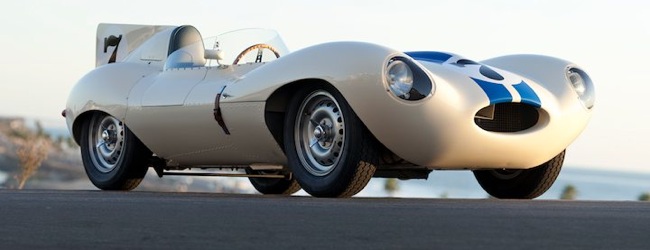



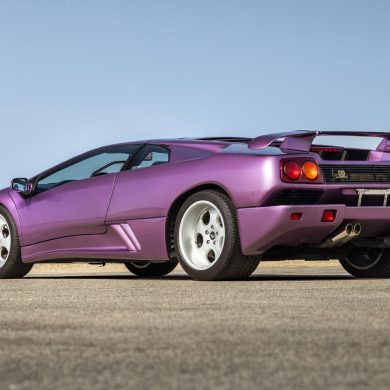
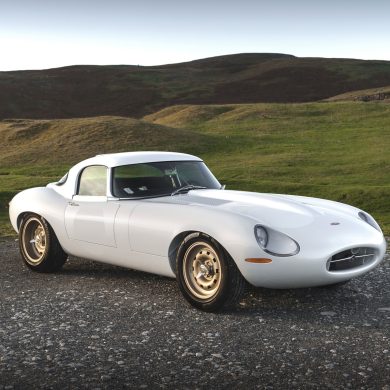
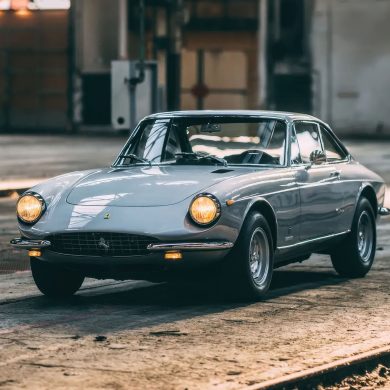
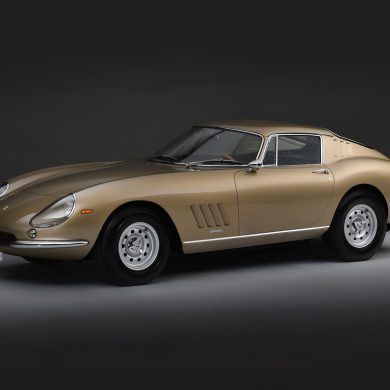
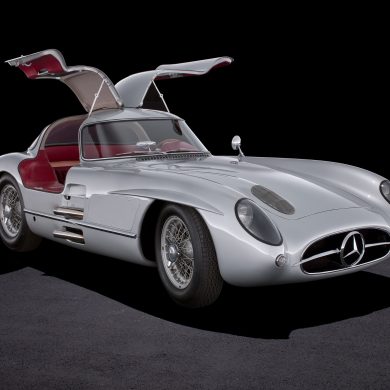


Outstanding!
My father is Pearce Woods. I have his 1955 Torrey Pines Championship cup that he won in a C Type. I have tried to follow this car. Sad to say I may never have the capital to acquire it and bring it back to the family.
Tim Woods,
I have your father’s Devin-Corvair that he bought from Bill Devin at the NY Auto Show in 1962 and raced at Pikes Peak a few months later. I have restored the car and have been invited to show it at the Quail Motorsports event in Carmel this August. I have been researching the early history of my Devin and Pete’s racing career and have found some photos of him in his champ car and the Devin.
I would very much like to ask you some questions. Please contact me at your convenience.
Tom Keosababian
Hi. Tim: I remember hearing Pete “road-testing” the D through La Habra heights before a race meet!
Many years ago, I heard on good authority that the 1956 Road & Track high speed runs where done on what is now Brookhurst Street in Huntington Beach, early in the morning, with light fog. I also got to see this D-Type race many times here in S. Calif., and my dad bought a new Jaguar 2.4 Sedan from Continental Motors in 1956.
I painted sports cars in a shop in Sawtelle [WLA] for Fred Ige 1956-7. Blackwell brought the car after a race with some damage. The spot I featheredged had 13 coats of primer and paint of various colors. The car was all black when I worked on it.
It was a little more than “passed through” me. I had it for nearly two years, lived ON Mulholland Dr. and had, shall we say, a lot of street fun with it!
THis article was taken directly from the Ultimate Car Page description of it and I’ve found that “passing through” my hands is a little self serving and incorrect.
I put about 2500 miles on it in nearly two years of Beverly Hills and Mulholland Dr. driving. I had the front suspension rebuilt by Francisco Mir in Santa Monica and it truly was a wonderful car to drive on a Sunday.
The ONLY reason I sold it was I decided that my left hand was never going to shift as well as my right hand does and I had to think about it, where right hand shifting was second nature to me or I may still own it.